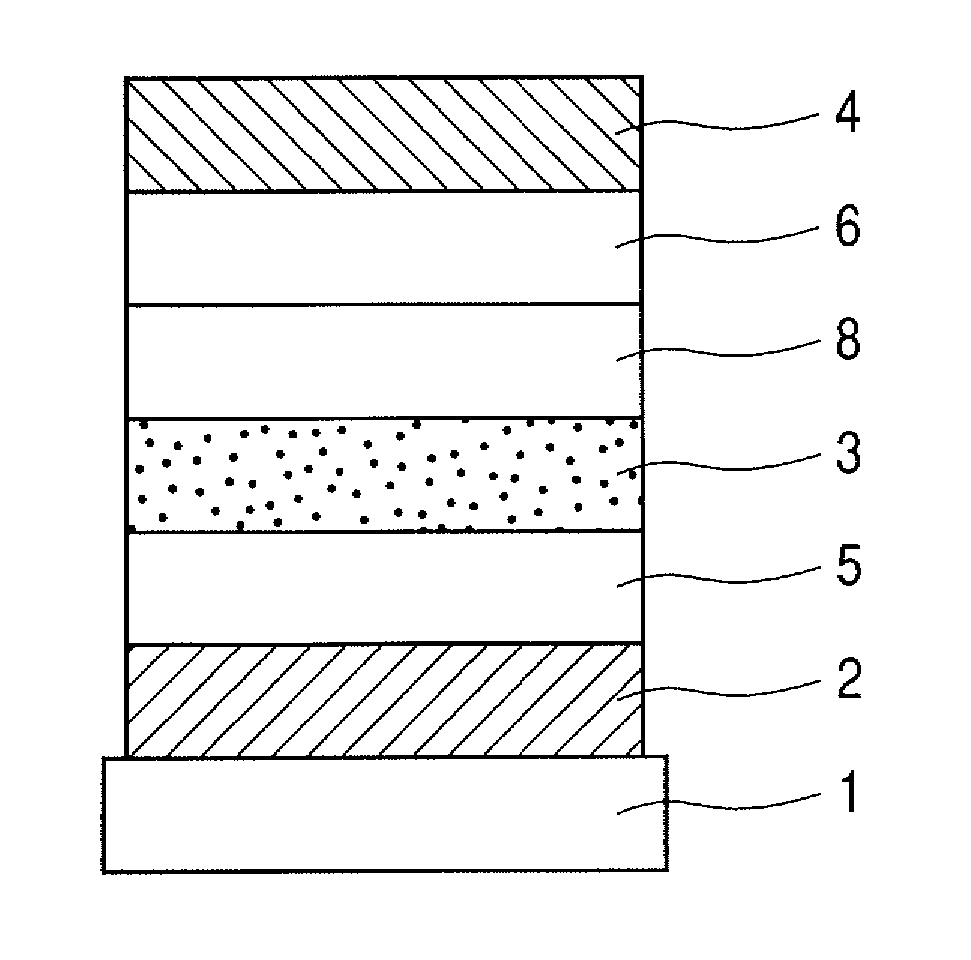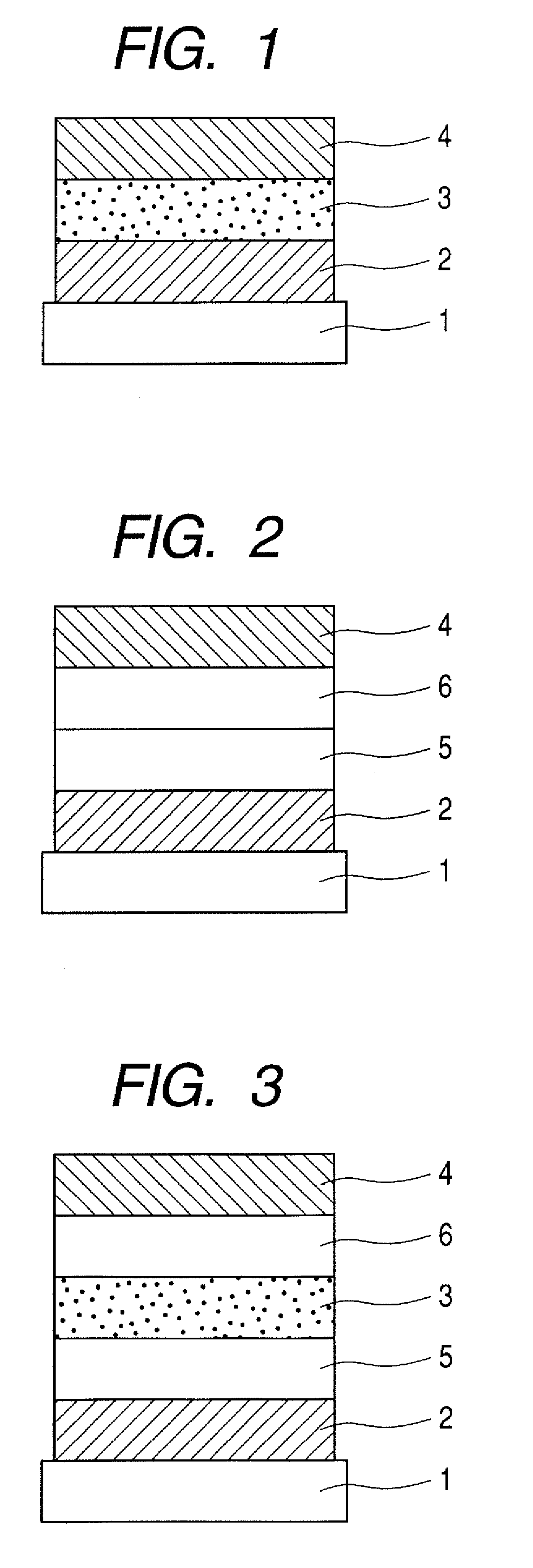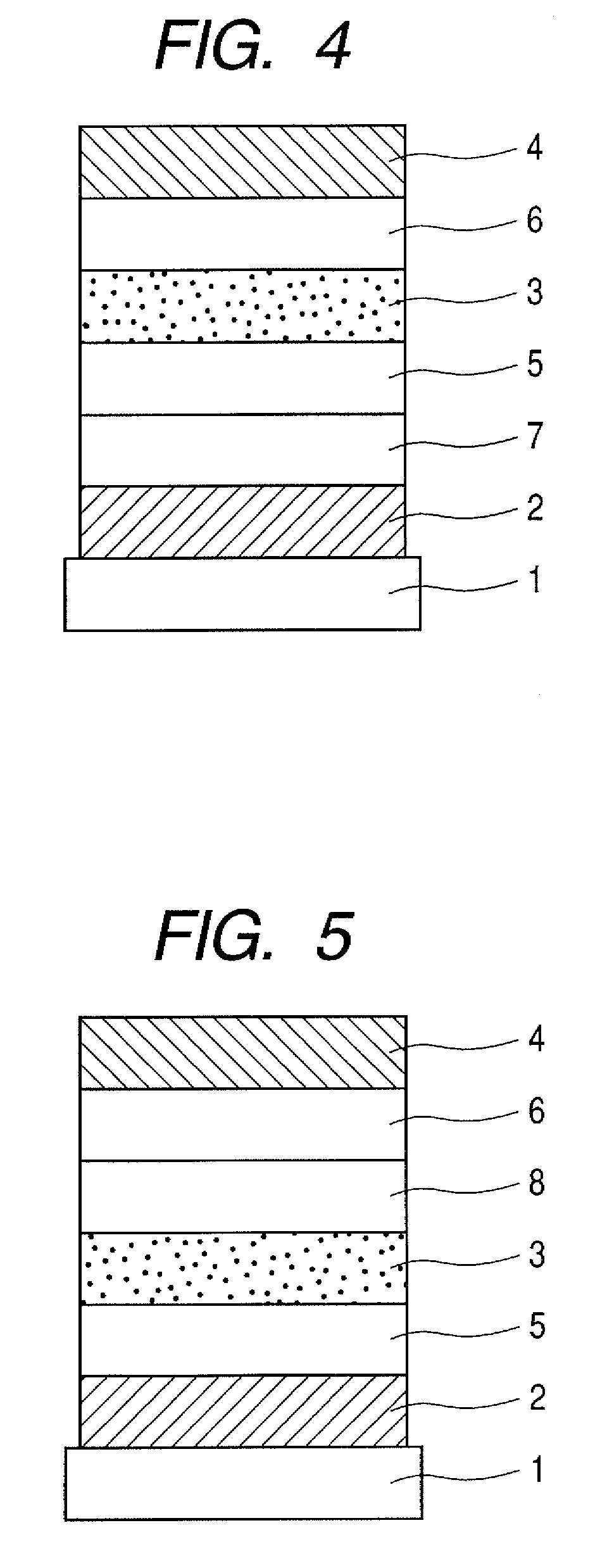Corannulene compound and organic light-emitting device
a corannulene compound and organic light-emitting technology, applied in the direction of discharge tube luminescnet screen, other domestic articles, natural mineral layered products, etc., can solve the problems of low external quantum efficiency, many problems in durability of devices, and the emission problem has not been sufficiently solved, etc., to achieve high light emission efficiency, low applied voltage, and excellent durability
- Summary
- Abstract
- Description
- Claims
- Application Information
AI Technical Summary
Benefits of technology
Problems solved by technology
Method used
Image
Examples
synthesis example 1
[0090](Synthesis of Exemplified Compound 1 and Compound 1-1 (tetrabromocorannulene))
[0091]Exemplified Compound 1 and Compound 1-1 (tetrabromocorannulene) were synthesized by using 2,7-dimethylnaphthalene as a raw material as shown in Scheme 1. Reference can be made to J. Am. Chem. Soc., Vol. 122, No. 26, 2000, and J. Am. Chem. Soc., Vol. 121, No. 34, 1999 upon synthesis.
[0092]
example 1
[0093](Synthesis of Exemplified Compound 4)
[0094]A 500-ml three-necked flask was prepared. 0.268 g (0.48 mmol) of Compound 1-1, 1.13 g (4.8 mmol) of 2-(9,9-dimethyl)fluoreneboric acid, 120 ml of toluene, and 60 ml of ethanol were placed into the flask. Then, in a nitrogen atmosphere, an aqueous solution prepared by dissolving 24 g of sodium carbonate in 120 ml of water was dropped to the resultant mixture while the mixture was stirred at room temperature. Next, 0.33 g (0.28 mmol) of tetrakis(triphenylphosphine)palladium(0) was added. After the resultant had been stirred at room temperature for 30 minutes, the temperature of the resultant was increased to 77° C., and then the resultant was stirred for 5 hours. After the reaction, an organic layer was extracted with chloroform, dried with anhydrous sodium sulfate, and purified by using a silica gel column (containing mixed developing solvent of hexane and toluene), whereby 0.36 g of Exemplified Compound 4 (white crystal) was obtained ...
examples 2 and 3
[0095](Synthesis of Exemplified Compounds 5 and 8)
[0096]Each of Exemplified Compounds 5 and 8 was synthesized in the same manner as in Example 1 except that 4-diphenylaminobenzeneboric acid or 1-naphthaleneboric acid was used instead of 2-(9,9-dimethyl)fluoreneboric acid.
PUM
| Property | Measurement | Unit |
|---|---|---|
| temperature | aaaaa | aaaaa |
| thickness | aaaaa | aaaaa |
| thickness | aaaaa | aaaaa |
Abstract
Description
Claims
Application Information
 Login to View More
Login to View More - R&D
- Intellectual Property
- Life Sciences
- Materials
- Tech Scout
- Unparalleled Data Quality
- Higher Quality Content
- 60% Fewer Hallucinations
Browse by: Latest US Patents, China's latest patents, Technical Efficacy Thesaurus, Application Domain, Technology Topic, Popular Technical Reports.
© 2025 PatSnap. All rights reserved.Legal|Privacy policy|Modern Slavery Act Transparency Statement|Sitemap|About US| Contact US: help@patsnap.com



